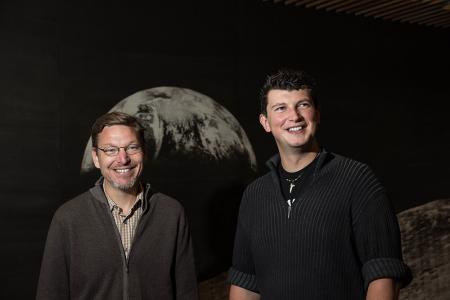TV’s 60 Minutes program recently reported a new planet in our solar system. It hasn’t been seen yet, but several Caltech researchers in Pasadena, California have found evidence of a giant planet orbiting our solar system. The researchers have nicknamed it Planet Nine, which has a mass about 10 times that of Earth and orbits the sun between 10,000 and 20,000 years.

Caltech professor Mike Brown and assistant professor Konstanin Batygin have been working together to investigate distant objects in our solar system for more than a year and a half. The two bring very different perspectives to the work: Brown is an observer, used to looking at the sky to try and anchor everything in the reality of what can be seen; Batygin is a theorist who considers how things might work from a physics standpoint.
The Caltech researchers, Drs. Mike Brown and Konstantin Batygin (pictured here), discovered the planet’s existence through mathematical modeling and computer simulations. Since Brown was responsible for demoting Pluto as a normal planet in 2006, he believes he has found its replacement.
Brown and other colleagues have been searching the skies for Planet Nine since their announcement in early 2016. Only the planet’s rough non-parallel orbit is known, not the precise location of its elliptical path. If the planet is close to our solar system, Brown says astronomers should find it soon. If it is in the most distant part of its orbit, only the world’s largest telescopes can find it.
This ninth planet would actually make our solar system similar to other planetary systems around other stars. First, most of the planets around other sun-like stars have no single orbital range—that is, some orbit extremely close to their host stars while others follow exceptionally distant orbits. Second, the most common planets around other stars range between 1 and 10 times Earth-mass planets. And that’s how technology discovers new planets!
~ Bob Larson is a former engineer, photo-journalist, technologist, and Marketing Director at 50 Plus Media Solutions
Photo Credit: Lance Hayashida/Caltech

